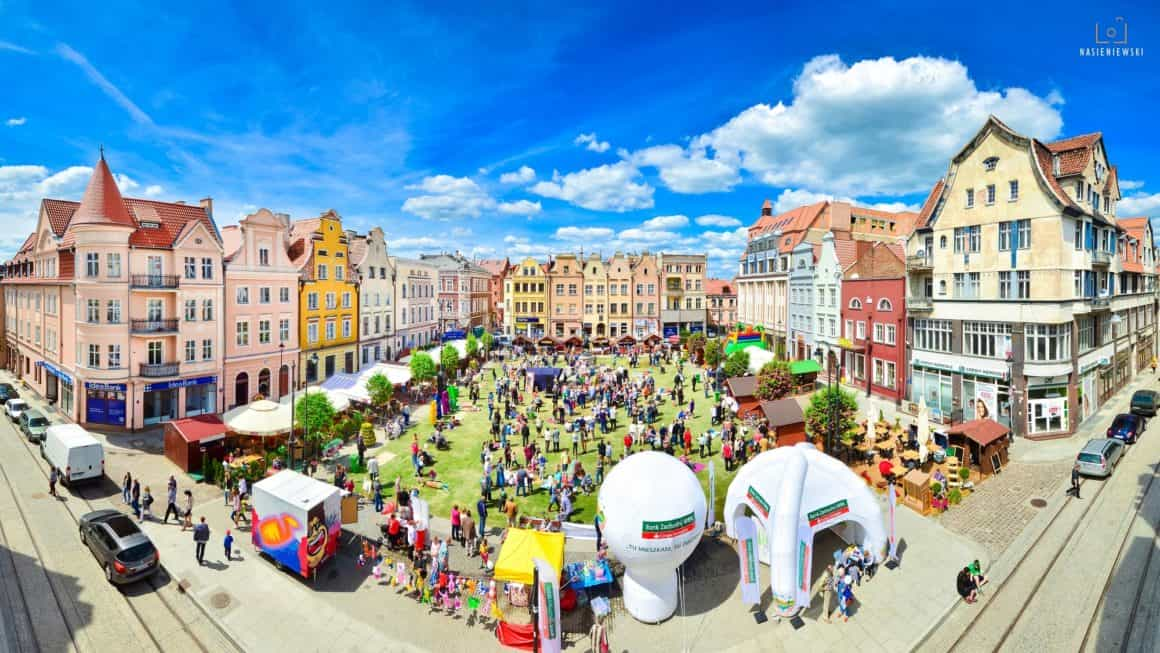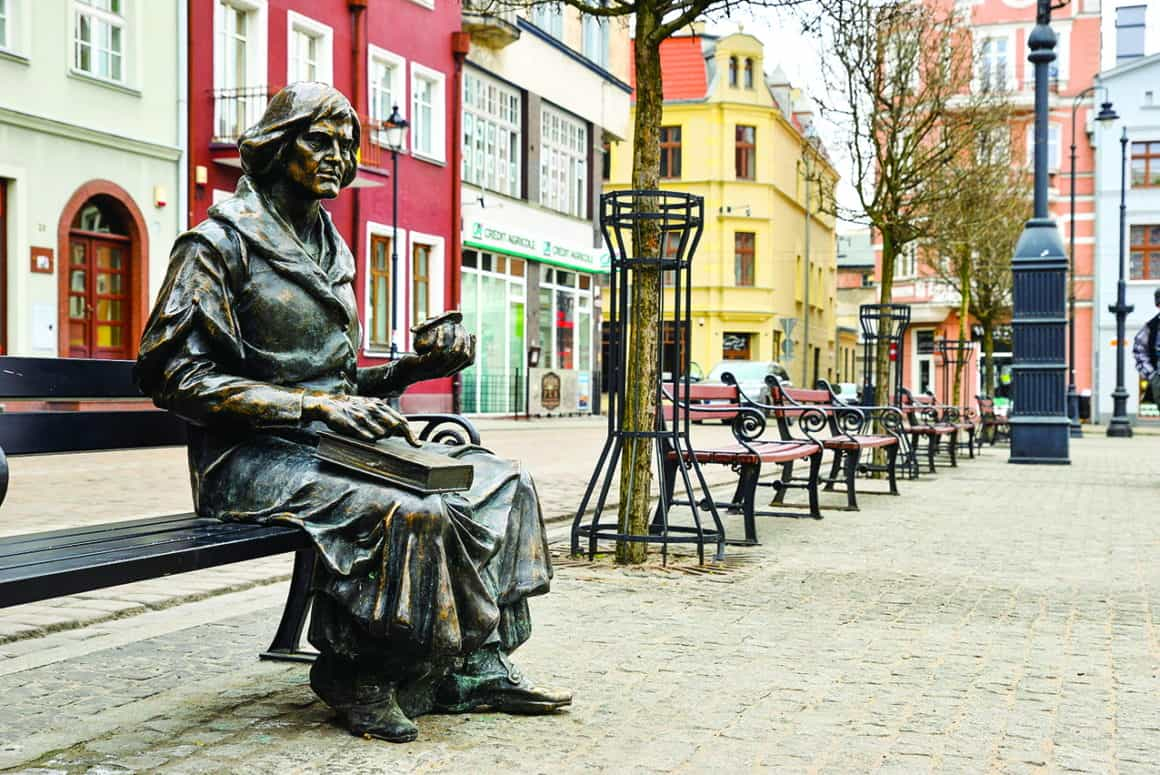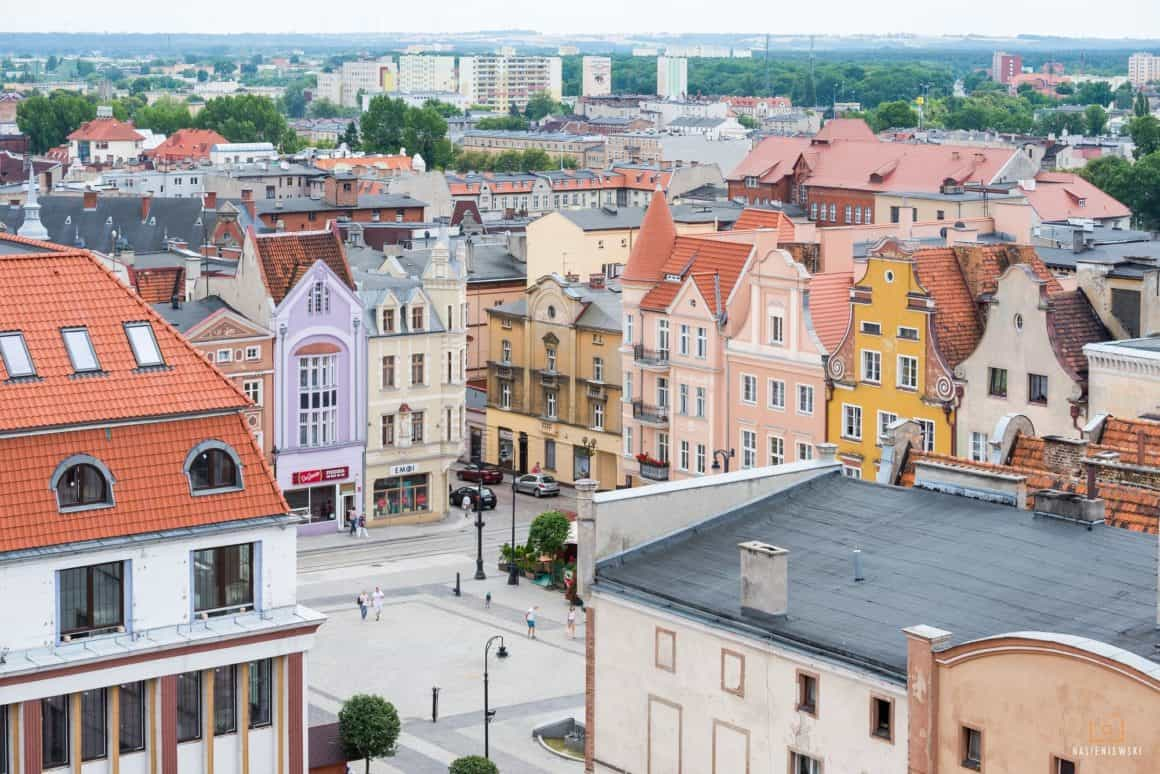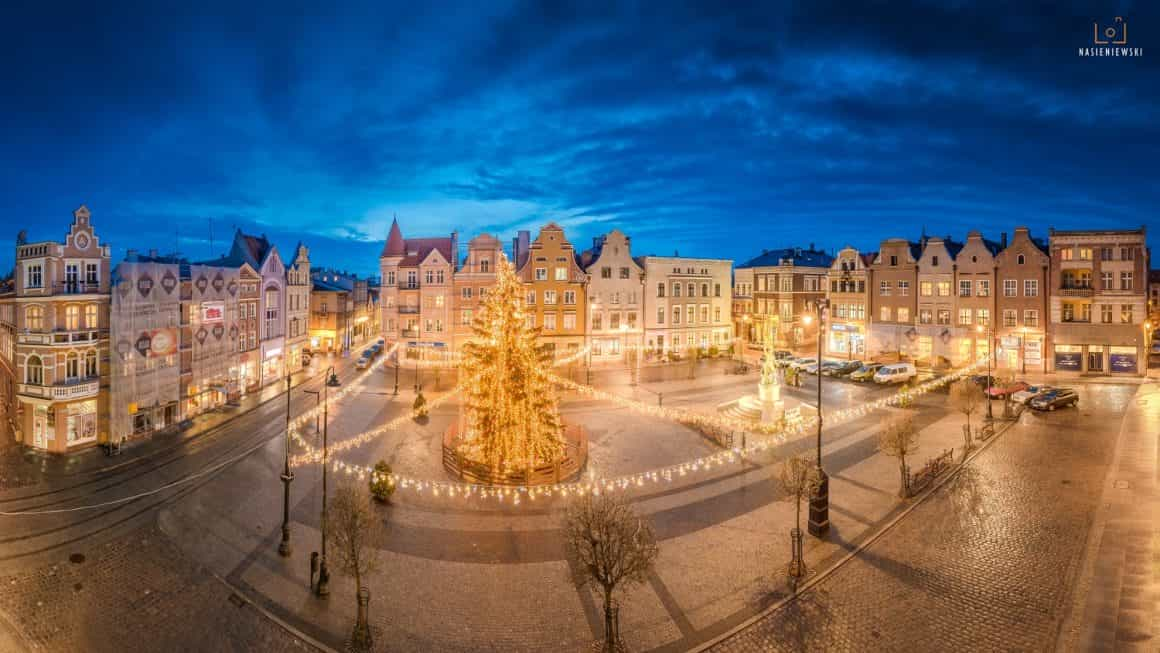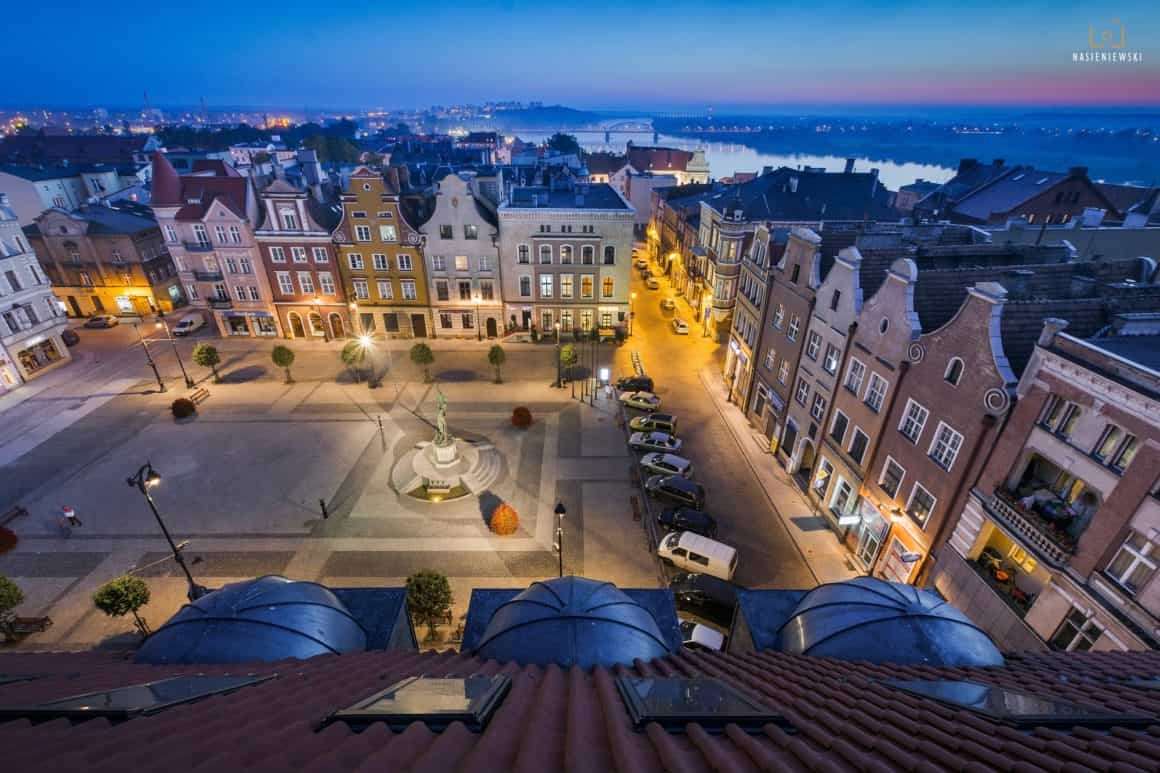The Grudziądz Market Square is in the shape of a rectangle sized 54 × 70 m, featuring exits of eight streets in four corners. It was paved in 1843 with granite and basalt bricks.
Formerly, a merchant’s house and a Gothic town hall stood in the middle. In the mid-19th century the town hall was moved to the western frontage of the square. As a result of the Magistrate building burning down (1893), the former Jesuit College became the seat of the authorities. From 1896, a luxury hotel and restaurant called “Królewski Dwór” (The Royal Court) operated in the place of the former town hall, but it was destroyed during the war. After the demolition of the Cloth Hall, an Evangelical church known as the Frederick Church was built in the eastern part of the Market Square between 1783 and 1784 and operated until the end of the 19th century.
Until the early 17th century, tenement houses surrounding the Market Square were built from wood, followed later by two-story brick buildings. Almost all structures on the western and southern frontages were damaged in 1945 and rebuilt in a style referring to the Baroque. The oldest tenement house in the Market Square is at Rynek 20, called ‘Pod Łabędziem’ (‘Under the Swan’), dating from the turn of the 17th century. The tenement house was built after connecting two older houses by a common facade.
The ‘Polish Soldier’ monument is seen in the central part of the Market Square. It replaced the former Independence Monument, which was destroyed by the Nazis in 1939. The Market Square was renovated in 2010. Its former pavement was restored, street lights modeled after 19th century lanterns were installed, and the monument base was modeled after the previous pedestal from the beginning of the past century.
In 2015, a bench with Nicolaus Copernicus the economist, who delivered his treatise on coinage in 1522 in the Town Hall in the Market Square, was erected in the north-west corner of the square.
.


